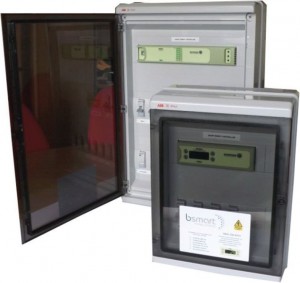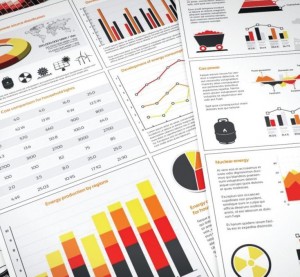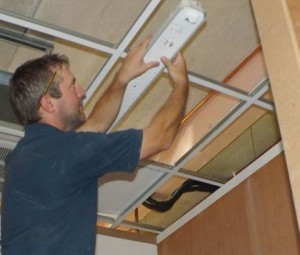 We’ve always felt a little threatened by intelligent technology – will we be replaced by an army of robots, or thrown out of a job by high-tech machinery? Answer: probably not. But, there are certain situations where technology can play a significant role, particularly when human influence is doing more harm than good. With vast swathes of commercial property soaking up energy at a rate of knots, employees are adding to that over consumption – often just through a basic lack of understanding as Chris Norburn of Bsmart Energy Solutions explains.
We’ve always felt a little threatened by intelligent technology – will we be replaced by an army of robots, or thrown out of a job by high-tech machinery? Answer: probably not. But, there are certain situations where technology can play a significant role, particularly when human influence is doing more harm than good. With vast swathes of commercial property soaking up energy at a rate of knots, employees are adding to that over consumption – often just through a basic lack of understanding as Chris Norburn of Bsmart Energy Solutions explains.
While the actions of people in the workplace will always be a factor, the latest energy management programmes (whether retrofit, or in a new-build) are making significant strides in taking human influence, where practical and feasible, out of the equation. By addressing attitudes towards energy consumption combined with the introduction of intuitive systems, occupiers can begin to ensure that buildings are optimised automatically for improved efficiency.
So, with the energy management market growing considerably over the last few years, what are the latest techniques and technology, and how important is it to change behaviour in the corporate world?
The here and now
 Like with anything in life, ‘if you fail to plan, you are planning to fail’. When it comes to understanding how and why your building consumes energy, it’s essential to have every ounce of data and information to hand, so you can prepare an appropriate strategy that’s bespoke to your consumption needs. No two buildings operate in the same way and the people who occupy them are very much individuals with distinct attitudes to how we use energy.
Like with anything in life, ‘if you fail to plan, you are planning to fail’. When it comes to understanding how and why your building consumes energy, it’s essential to have every ounce of data and information to hand, so you can prepare an appropriate strategy that’s bespoke to your consumption needs. No two buildings operate in the same way and the people who occupy them are very much individuals with distinct attitudes to how we use energy.
The key is to approach energy management in a phased and strategic way, creating a tick sheet of actions, that way you can ensure that the building is operating to its full potential once everything’s in place.
The first step is to measure and analyse. It’s important to assess a building and evaluate areas of wastage. This can be done by installing metering and sub-metering systems for all utilities, to identify energy consumption patterns. By making sure that meters are connected to a data collection and reporting system, this allows for automated analysis – thus removing an element of the human touch. Consumption alarms can be set up to alert users if energy usage exceeds pre-set levels and the data from those assessments can then be intelligently used to put in place targets and continually review performance.
 That’s the important part – how many times do we implement management information systems across a business, only to file away the data, pat ourselves on the back, and then fail to act on the mine of information that’s sitting right on our laps? Targets are essential, but as the business evolves, as we move through the year and the fluctuating seasons, those goals will change and so with it, the performance of the building.
That’s the important part – how many times do we implement management information systems across a business, only to file away the data, pat ourselves on the back, and then fail to act on the mine of information that’s sitting right on our laps? Targets are essential, but as the business evolves, as we move through the year and the fluctuating seasons, those goals will change and so with it, the performance of the building.
The key is to always improve upon efficiencies. While metering is an essential component of any energy management project, simply measuring a premises energy output isn’t going to lead to tangible savings. As a result, the next phase of an energy management programme is to address areas where system changes will offer the highest savings potential.
By installing Building Management Systems (BMS), you can ensure that all heating, ventilation and air conditioning equipment is correctly controlled with regard to operational hours, temperature, occupancy and influences.
As a minimum, commercial buildings should be well insulated and air tight, which will help maintain a stable ambient environment and reduce the resultant load on heating and cooling systems. Significant gains can also be achieved by replacing older heating systems with modern, efficient, or sustainable models that will increase the efficiencies of the building and its energy usage. The same can be applied to all aspects of heating, ventilation and air conditioning assets.
In addition, consider fitting water saving devices to taps, showers, urinals and toilets to reduce usage and flow rates. Lighting control mechanisms, such as presence detection, light sensors and/or dimmable fittings, also ensure lighting is only used when areas are occupied or required.
Energy management isn’t a once-a-year job, or an ‘I’ll revisit it every five years’ consideration – as businesses, we must always be thinking about future and continual improvements.
Tech talk
With a whole host of options designed to control and manage a building’s energy consumption, it can resemble something of an energy manager’s dream. So, what technology is out there?
Lighting, which can account for as much as 40% of a premise’s energy expenditure, can be tackled by converting designs to high frequency, low voltage luminaries and, wherever possible, maximising natural light sources through the installation of light tubes and sky lights. Premises with large areas of glazing may also benefit from solar shades fitted to the outside of window expanses to reduce heat gains and improve staff comfort levels.
The use of solar thermal projects can reduce the need for gas/electric HWS heating and fitting SMART thermostatic radiator valves is an easy way to control zoned temperatures throughout a large building. When it comes to heating, heat pumps can be used to exploit use of free cooling/heating, whilst voltage optimisation units can be fitted to improve the efficiency of supply to a building.
Once extensive metering systems have been put in place and the most obvious areas of inefficiency have been rectified, further savings can only be achieved through the use of fully-integrated control platforms, which will actively manage a building’s environmental systems.
A BMS can be linked to sub-control platforms, such as Lux sensors, which allow lighting levels to be automatically adjusted to compensate for changing natural light patterns. It can also be linked to environmental controls, which can signal air conditioning and heating systems to turn on or off throughout – relative to ambient temperature fluctuations (known as optimisation and compensation demand controls). Technologies, such as presence detection sensors, can be used independently to control aspects, such as lighting or heating. They can also be set to work in tandem with central automatic shutdown procedures, which will cut off power to all non-essential services when the system detects the building is not in use.
Because demand peaks are often responsible for a large proportion of a building’s energy usage, control platforms can also be used to compensate for unforeseen energy loads or exceptional consumption events. Using profile information from metering, systems can be programmed with pre-set tolerance levels, which take into account factors like daily energy price fluctuations and a building’s peak operating times, to ensure energy is being drawn at the most cost effective periods.
Removing the human touch
With technology evolving all the time, the sky’s the limit when it comes to managing energy consumption, not just of an isolated building, but across multiple sites – whether these are in close proximity, or scattered across a UK-wide estate.
There are a number of factors that contribute to the lack of efficiencies in a building, including building design; usage of heating, ventilation, lighting, air conditioning and hot water services; and geography – largely external ambient conditions and site locations. But, perhaps most significantly, it’s user behaviour.
You can never underestimate the importance of staff awareness training. Not only will it bring employees on board about why the business is trying to save energy, but it will educate them on how they can help. Technology is there to act as a back-up and it will never assume that something’s been done, or forget to flick that all important switch.
For example, energy controllers can be linked with the alarm or ‘last man out’ systems, ensuring lighting, heating and air conditioning are de-activated when the building is unoccupied. Retrofitted technology allows remote and constant monitoring and recording of energy usage at each location. This means that owner/occupiers can be assured that any unusual energy usage will be immediately flagged, investigated and remotely rectified. What’s more, data for an entire estate can be evaluated and compiled into monthly reports which highlight the year-on-year performance of energy usage, indicate any unusual energy usage (for example, overnight peaks in electricity usage) and rank buildings to show the best and worst performing.
The focus for reducing energy should always take the appropriate amount of human influence out of the equation. If this is achieved through a blend of technology, the latest techniques and education, then it will result in immediate and sustained reduction of energy usage across all targeted sites, with expenditure on energy bills naturally decreasing in line with the fall in energy usage.

